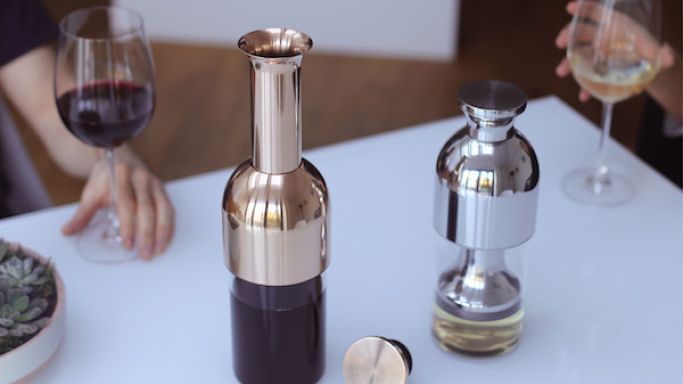The claim that 50 million litres of wine are thrown away every year in the UK alone might sound far-fetched, but when you dispose of as much left-over wine as I do, it seems entirely realistic. I do my best to recycle as much of it as possible (via my digestive system), but a man’s liver has its limits.
But regardless of whether or not your household contains a wine professional, everyone has experienced throwing wine away at some point, most commonly because it has been left in a half-finished bottle for a few days, during which time it has started oxidising and turning to vinegar.
Avoiding exposure to air is the key to preserving opened wine, and ever since the corkscrew was invented, people have been trying to come up with the most efficient methods of doing just that.
Some are mechanical, such as the Vacuvin system of pumping air from a bottle – though my experience of such devices is that they make minimal difference. Others are ostensibly pragmatic, such as decanting a half-finished bottle into a smaller vessel – filling it to the brim to eliminate air, then sealing it – though in reality this is highly impractical.
More recently, sophisticated preservation systems such as Coravin and Enomatic have employed inert gas to give much more effective protection. Such devices are now so widely used that their efficacy is well established – but they are expensive, requiring costly refills to work.
Now, into the fray comes a new invention promising the best of both worlds: a mechanical device that is both affordable and effective – and boasts several other advantages too.

It’s called the eto (rhymes with Dolcetto) and it comes from the brain of product designer Tom Cotton. His original inspiration stemmed from reading about decanting leftover wine into smaller vessels, as mentioned above. What if, he thought, there was a way of altering the volume of a bottle to (theoretically) preserve any amount of wine?
Six years later, his finished product does exactly that. It’s a half-glass, half-metal decanter with a neck that can be pushed down to press a plunger onto the surface of any volume of wine within, as shown in their promotional photograph below. This is the key innovation, and if the eto is going to be a success, its preservative qualities must be unimpeachable.

Accordingly, I tested the device on two occasions. Both times, two identical bottles of red wine were purchased. One was opened, and half of its volume was decanted into the eto. The other half was left in its original bottle, and the cork replaced. The eto and the half-emptied bottle were then stored in the fridge for seven days.
On the seventh day, the second bottle was opened and two tastings were then set-up: a blind tasting of each wine (freshly opened, eto-stored and bottle-stored) and a triangular tasting (two glasses of freshly opened wine, and one of the eto-stored wine). The wines selected were Casillero del Diablo Cabernet Sauvignon 2015 and Marks & Spencer’s 2012 Pauillac from Baron Philippe de Rothschild. In each case, the objective was to assess the condition of each sample.

For me, the results were unanimous: there was no perceptible difference between a freshly opened bottle and the eto-stored sample, while the bottle-stored wines had significantly deteriorated, becoming far too oxidised to drink. They joined the 50 million litres of wine that goes down the drain.
So far so good, and the eto has a few more tricks up its polished metal sleeve. A clever valve design allows the wine to be poured straight out of the neck, allowing for efficient serving. Also, the process of pouring the wine into the eto means that no other decanting is required – the idea being that a whole bottle is poured into the eto, then whatever remains can be kept fresh.

Like all good design, the eto provides a simple and elegant solution to a commonplace albeit decidedly first-world problem. Aesthetically, it looks rather peculiar at first, but the materials feel reassuringly robust, and are all of food-grade standard. Operationally, it requires quite a bit of force to push down the seal – but no more than is routinely exerted to extract a cork. Cleaning should be straightforward, because it unscrews in the middle. I did wonder if the silicone seal will last indefinitely, but the inventor assures me it was 'chosen for its durability to withstand constant use' and that the eto was tested over 14 months at Bangor University – an experiment I trust their students were keen to participate in.
The world of wine is awash with spurious devices intended to improve the appreciation of wine, the likes of which generally involve high cost and low satisfaction, as witness this electronic decanter. It's therefore especially noteworthy when something comes along that is both original and effective – I can't think of any other product which fulfils their slogan 'decant, serve, preserve' so convincingly. The eto Kickstarter campaign launched yesterday, allowing earlybird purchase of a unit for £55, making it furthermore one of the few wine accessories that is entirely worth the price.

